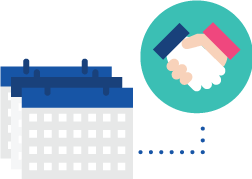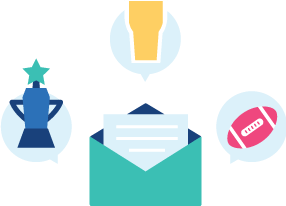Sales Follow-Up Email Strategy
Lesson 8
Building Relationships to Build Trust
with Steve Woods of Nudge
Steve Woods is the CTO of Nudge.ai, which is a B2B sales platform that uses artificial intelligence (AI) to help salespeople become better at their craft. Nudge teaches them how to build relationships, establish trust, and manage long-cycle deals that require consistent touches and follow-ups.
[lyte id=”WfjWpr5QyjY” /]
Don’t Waste the Momentum [01:09]

Nudge’s bread and butter is the long-cycle deal. Even if a prospective buyer fits all the criteria and is a good match for a company’s services, they may not be ready to purchase just yet. It may be months, quarters, or even years before they are truly ready to purchase.
“Over that period of time, the challenge of following up is to find a way to stay top of mind, stay relevant, and help them move down that buying journey bit by bit.”
Sometimes that’s a simple follow up or touchpoint to stay top of mind. Other times, it may be necessary to introduce new concepts to a prospect. Showing them an alternate perspective or providing a different lens through which they can look at their problems might be all it takes to push them over the edge to purchase.
Broaden Your Approach [03:28]

A lot of challenges come down to the idea that if you’re going to talk to somebody, it has to be pitching the product you’re selling. However, the best salespeople focus on developing deeper relationships first.
“If you see an opportunity to cheer them on, engage on another level, or help them achieve something, then you can create an immensely more open dialogue.”
Don’t hesitate to talk about sports, current events, recent awards, beer, politics, or any other common ground you share with prospects. Those relationship-building extras can help lower their guard, and they’ll be more open with you than they’d ever be if you only focused on yourself and your products.
Engage the Right Channels [05:44]

The multi-channel approach is very effective. That could be Twitter, LinkedIn, Facebook, or any other platform prospects might be active on. There’s no right or wrong answer here, but you’ve got to understand how they view it.
If they only ever talk about sports and family on Facebook, then that might not be the best channel to engage them on. However, if LinkedIn and Twitter seem to be all or mostly business, then have at it.
Trust Is Everything [08:41]

Selling something by reaching out to vast volumes of people is a pitch; it’s not relationship building. And there’s nothing wrong with that. Make your automated pitch rock-solid, send it out, convert or not, and move on. This type of selling requires minimal trust.
But if you want to build trust with prospects, you need to specialize in building relationships. If you want to help prospects think about their business and their problems a little bit differently and take another step in the buying journey, you’ve got to build trust with them.
“You use trust to open the door to shifting a point of view.”
When trust is established, then you’ll be seen as an advisor instead of a salesperson. You’ll be a colleague instead of a stranger. Long-cycle, complex, and high-dollar deals are built on this foundation of trust and relationship nurturing.
Deliver the Specificity [10:15]

Buyers have immense control over information these days, and can easily Google you, your company, and your product to find out most of what they need to know. Any facts and figures you include in outreach as a salesperson are of limited value.
“The valuable things are when you can send something so nuanced and specific that they wouldn’t have discovered it on their own.”
Finding opportunities to send information like that requires going deep into the buyer’s psyche. It requires data, research, nurturing, and a real commitment to the buyer’s success.